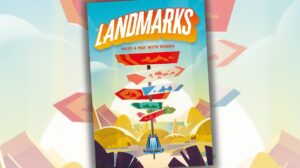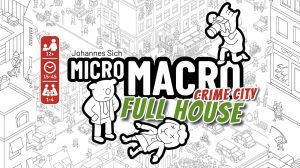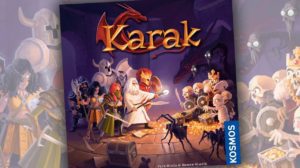Disclosure: Meeple Mountain received a free copy of this product in exchange for an honest, unbiased review. This review is not intended to be an endorsement.
The proof is in the pudding—where Fabio Lopiano is involved, solid Eurogame design seems to follow.
Friends in Chicago know how enamored I am with Shackleton Base: A Journey to the Moon, a co-design brought to us by Lopiano and Nestore Mangone, the latter a growing legend in his own right thanks to Darwin’s Journey. 2022’s Autobahn (another Lopiano/Mangone co-design) was solid too, even if I thought the physical production was at times a bit fiddly for my tastes. 3 Ring Circus was great too, a solid medium-weight experience from the games I tried in 2023.
I still haven’t even played Lopiano’s first major design, 2017’s Calimala (with a second edition hitting shelves earlier this year), and you can bet your bottom dollar that I’m going to be lurking near the Alley Cat Games booth at SPIEL Essen this fall in the hopes of getting a review copy of the next Lopiano/Mangone release Baghdad: The City of Peace. (And, speaking of Shackleton Base, you know “Shack Town” is going to get an expansion…because, well, you know.)
Lopiano has figured out efficiency puzzles, and he is working with some of the best people in the industry. Alongside designer Mandela Fernandez-Grandon, Lopiano’s second release of 2025 is Ayar: Children of the Sun, the third game in a series published by Osprey Games that includes two other Lopiano co-designs, Merv: The Heart of the Silk Road and Sankoré: The Pride of Mansa Musa.
Osprey offered us a chance to check out Ayar prior to its upcoming release (the game will officially hit shelves at SPIEL Essen 2025), so I rushed it to the table for three plays, including a solo, two-player, and four-player experience. Ayar’s central puzzle is good and the Knizia-esque scoring mechanics were a blast to manage. The only knock I can level against Ayar is the same issue I have with Shackleton Base—the play experience varies widely based on player count.

It’s “Tambo”, Not Rambo
Ayar: Children of the Sun is a tricky game to categorize. There are four main “activities” that drive the game’s action system (each of which turns into its own mini game), centered around four tracks that slowly become unavailable over each of the game’s four rounds. At the end of each game, players will score the lower of their two score tracks to determine a winner, and across my plays I have seen scores all over the map.
Here’s what I can say—I love the “easy to learn, difficult to master” approach of Ayar’s systems.
On the main board, there are four tracks with 30 spaces each. That sounds alarming, but the way the board’s design is set up, each track is an easy-to-parse walking path for an Ayar king in four different colors. Players collectively manage the forward movement of each Ayar on these tracks by managing their own puzzle. On a turn, players use “Step markers” that match the color of the Ayar tokens on the main board to move them 1-3 spaces forward, then place a small building token known as a “Tambo” on any available action space behind that Ayar.
Tambo selection is done by activating a row or column in each player’s personal 4×4 tambo grid, which also grants a bonus each time a row or column is emptied of tambos.
Then, a player completes the activity matching the tambo placement location, using a power total based on the number of revealed power icons in the triggered row or column. There’s terrace farming, which is an area majority game to gain a small reward at the end of each round. There’s reed bundling, which turns into a race between players to clear island tokens from their main board by sending a small boat token around a series of paths. Weaving is a tile placement mini game where sun icons on tiles need to be matched, and there’s a set collection game tied to pottery tokens.
It’s a Euro, so you know you won’t be able to balance your attack in every area. But because of the two-track scoring, you can’t completely ignore any area either. This is also the point where Ayar breaks left or right, depending on your tastes around tension.
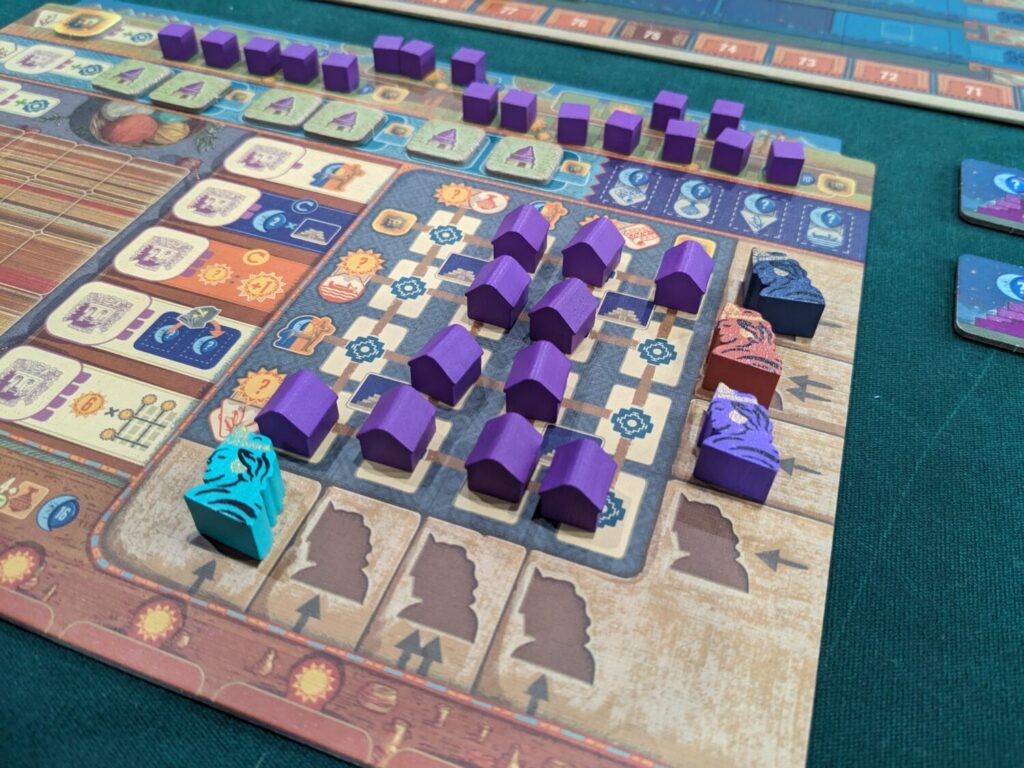
A Word About Player Count
In my circles, the game Galactic Cruise has become known this year for being a “loose” game…for the most part, all players can always take any action they want. In the rare case that they can’t afford something, getting money or resources is usually easy. The tension in that game is not tied to freedom of choice around actions…instead, it is a race to get the most spaceships up in the air. Brass: Lancashire goes the other way, especially as it nears its end game. Money’s tight. Building space, rail locations, and ports used to sell goods are all tight. You very well might not get to do any action you want on your last turn, maybe as many as your last 2-3 turns if you don’t plan well or read the way other players are circling their final plans.
I love Brass: Lancashire for that tension. (It’s also why Lancashire is my pick over the slightly looser Brass: Birmingham.) I shied away from additional plays of Galactic Cruise because it just didn’t feature my preferred level of drama. When people tell me that a game is loose with money, or it’s easy to find spots to place workers, or that combat is a breeze, I get nervous. I never enjoy playing a video game on easy mode, and that extends to my preferences around board games. I like the challenge of a good puzzle.
Which brings us to the way actions work in Ayar. In my solo and two-player games, I was usually able to take one of the game’s four actions whenever I wanted, because of the way tambos are placed. (Spaces are not blocked in Ayar if the player count dips below four, so the map is always the same regardless of player count.) After moving an Ayar token forwards, players can fill any space behind that Ayar with a tambo. And because each track has an equal spread of the main actions, you can usually find something on the buffet worth eating.
In my four-player game of Ayar, selecting actions near the end of the game was comically tight. I was guffawing every turn, as players closed out certain actions on the final track in our game. It was glorious. People were cursing. Players who had taken a balanced approach had something useful to do, while others who had not planned as well paid the price.
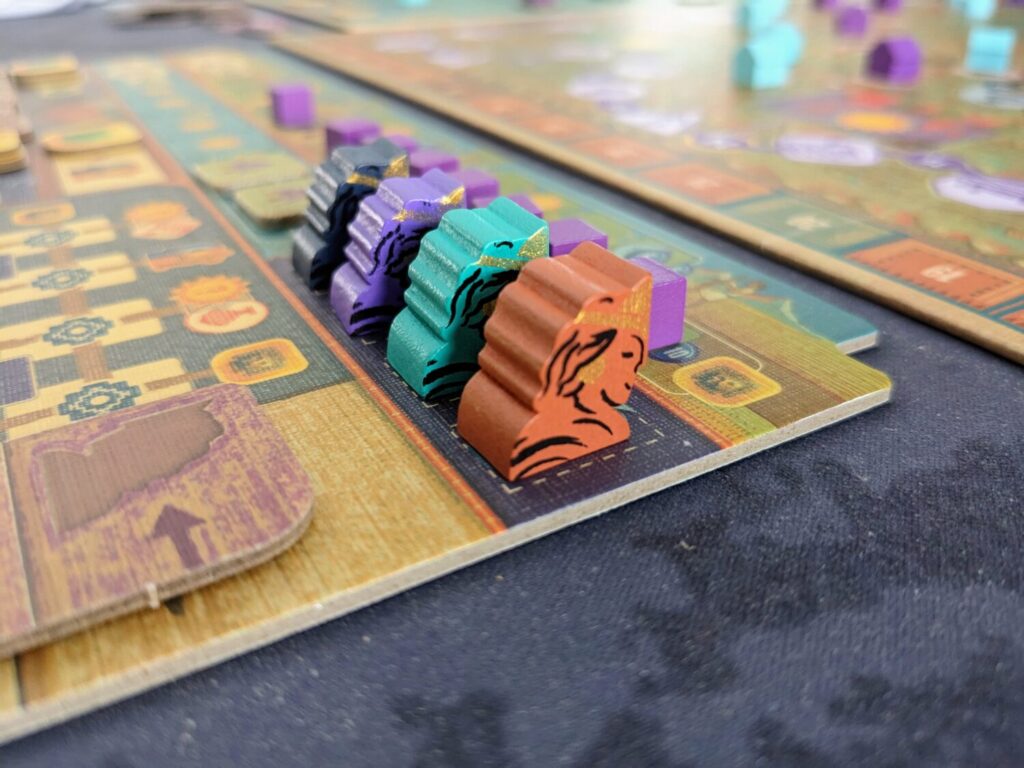
5, 4, 3, 2, 1 Winner
Ayar’s round progression really shines.
In the game’s first round, each player must use all five of their Step markers: one in each color aligned with the game’s four tracks, and one gold Step marker, a wild that can be used to activate any track. At the end of each round, the Night Phase, the Ayar token that is farthest behind “retires” (didn’t die…nope, they “retired”) and is removed from the board. In a fun thematic twist—shout out to credited subject matter expert Antti Korpisaari—the Ayar king token is moved off the board to retire with an Ayar queen token in a matching color.
And in each play with a new group, this hits the players too…there are going to be less tracks available all game long. Less spaces to drop tambos. Timing considerations tied to the placement of Temple tiles, which grant points only when an Ayar row is closed out, come into view. The gathering of Sun points, usually done with either a tambo grid bonus or at the end of a player’s turn with Raymi tiles, benefit all players but only trigger when an Ayar token passes certain spaces on their tracks.
There is a very handsome mix of considerations that players must make before play begins, and even then, using the wild Step marker on a track that maximizes points in certain activities that will be most beneficial is clutch. In one of my games, I was sure I was betting on the right horse to not be the last-place Ayar token…but then an opponent used both his wild and his dark blue Step tokens on the dark blue Ayar track, thwarting my plans by moving dark blue out of the running for being in last place on the current round’s tracks.
Five turns in the first round. Four in the second, then three in the third, before a very snappy final round featuring just two turns (those other three Ayars retired!) and a boatload of anger. The game’s action rounds (the Day phase) and scoring rounds (Night) led to plays that usually landed in the 25-minutes-per-player range. Even with one play under your belt, two-player games will wrap in about an hour.
And during that playtime, you get to play around in a fun little sandbox.

Lopiano is Hot, Folks
Shackleton Base and Ayar: Children of the Sun are two totally different games, but they are totally co-designed by the same guy. Lopiano is hot right now folks, and I am getting the feeling more and more that he is not just hot, but he is simply great at the business of bringing great Euro-style games to the marketplace.
Turn to turn, Ayar is a fun system, but I will not seek out more plays at the lowest player counts. However, if I’m doing a Lopiano night (coming soon to a Chicago bar near you!), I’m doing Autobahn, Ayar, and “Shack Town” (Shackleton Base) with four players. At four players, Ayar is a top-five game for me in 2025. With less players, it’s still fun, but it’s not as tense, especially in the final half of the game.
I don’t have any other notes, although one nod for Shackleton Base is the sheer variety of the setup thanks to the seven included corporations. In Ayar, the Raymi scoring tiles are mixed a bit, but it just means that the activities that are going to score earliest are going to be the table’s focus for that game. The bonuses unlocked by the player boards are static, as are the layout of the four main tracks by color.
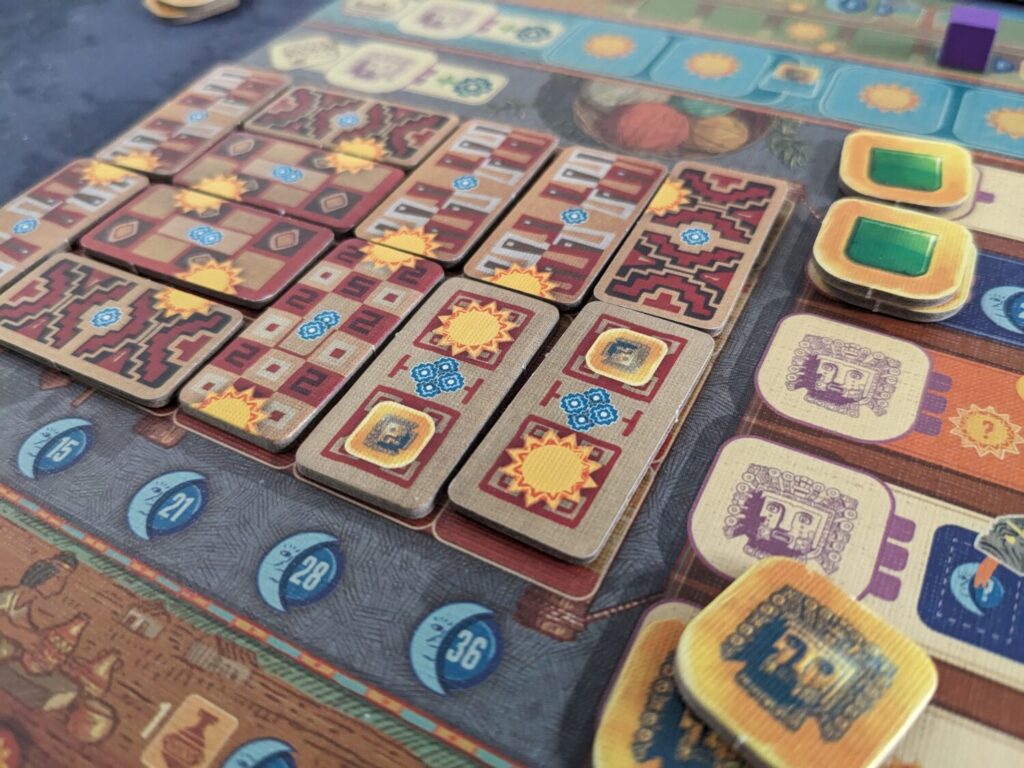
That’s all to say that I think Shackleton Base has a longer life in my collection thanks to the sheer variety included in the base game. Ayar is still a very solid, snappy experience that lands very medium-weight with other players in my network. I also think Ayar will be a little easier to grasp for players embarking on repeated plays because the scoring system can initially seem opaque. (Ahh, great, I can get 20 or 30 points every time I do this “moon” scoring for one of the activities…but now I have 100 moon points and like six sun points! What do I do???)
As a production, Ayar (like Sankore and Merv before it) is just a joy, from a custom storage solution with a plastic cover to a rulebook that is pared down to only what I need to teach the game. The icons registered with me almost immediately, and figuring out the only confusing icons in the game is as simple as flipping the rulebook over to discover some of the more unique bonus actions.
Ian O’Toole dropped in to provide the graphic design and another great box cover portrait (as he does, from time to time), so Ayar is a looker from across the table, with a smaller footprint than I was expecting, in a good way. And because every game needs a player aid, I am very happy to report that the Ayar player aid is enough to teach the basics of the game actions, with the actions themselves being so simple that players rarely had questions about how to execute their turn.
Ayar: Children of the Sun is fantastic. It builds on the designers’ credibility and now has me interested in going back to try the other two games in the series. Wildlands and Crescent Moon are still my two favorite Osprey strategy games, but Ayar is inching up the charts with each play!



